Library Design
> 40ishoracle
> Research
Ce Workflow Analysis Process. Plan4. Edutopia. What Does the Next-Generation School Library Look Like?
At a time when public libraries are starting to offer everything from community gardening plots to opportunities to check out humans for conversations, some school libraries are similarly re-evaluating their roles and expanding their offerings.
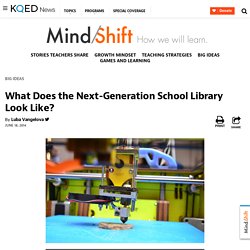
Case in point: Monticello High School in Charlottesville, Virginia.
Library Renovation: On Becoming an Academic Commons. C-Level View | Feature.
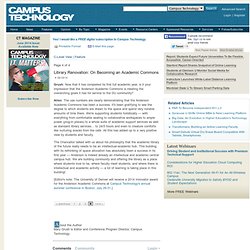
Embedded Librarian 101: How to Get Started. June 17, 2013 by Joe Hardenbrook As librarians, we can’t wait for students to ask us questions.
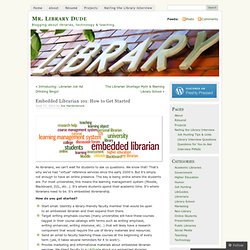
We know that! That’s why we’ve had “virtual” reference services since the early 2000′s. But it’s simply not enough to have an online presence. The key is being online where the students are.
E-Reading Rises as Device Ownership Jumps. Most American adults read a print book in the past year, even as e-reading continues to grow The proportion of Americans who read e-books is growing, but few have completely replaced print books for electronic versions.

The percentage of adults who read an e-book in the past year has risen to 28%, up from 23% at the end of 2012. At the same time, about seven in ten Americans reported reading a book in print, up four percentage points after a slight dip in 2012, and 14% of adults listened to an audiobook. Though e-books are rising in popularity, print remains the foundation of Americans’ reading habits.
Mobile Connections to Libraries. Released: December 31, 2012 By Lee Rainie, Kathryn Zickuhr and Maeve Duggan Some 13% of those ages 16 and older have visited library websites or otherwise accessed library services by mobile device.
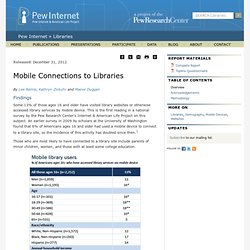
This is the first reading in a national survey by the Pew Research Center’s Internet & American Life Project on this subject. An earlier survey in 2009 by scholars at the University of Washington found that 6% of Americans ages 16 and older had used a mobile device to connect to a library site, so the incidence of this activity has doubled since then. Those who are most likely to have connected to a library site include parents of minor children, women, and those with at least some college education.
Library website users. New Tab. The Time Is Right for Libraries to Embrace Participatory Culture. Antero Garcia delivered the closing keynote at the 2013 SLJ Leadership Summit in Austin.

The New School Library. Without question, the Internet has changed the way we think and learn, and will continue to do so as our technology evolves. In particular, the ability to access enormous amounts of information at any time from almost any place is forcing schools to redefine the idea of a classroom and the way we approach teaching.
An Office Landscape Designed to Kill Boring Meetings.
Yves Béhar and Herman Miller are reinventing the office for a more connected generation.

Designs become icons when they embody the time in which they were created. The Eames lounge chair represented a midcentury shift to a more casual home life when many people still held “tea times” in formal living rooms. The invention of the Aeron chair in the 1990′s marked an era when a company could show that it cared about its employees by giving them the pinnacle in ergonomic seating. Today, with the launch of Herman Miller’s Public Office Landscape furniture system, Fuseproject, the design firm run by Yves Béhar, hopes to capture the spirit of our networked lives in a collection of chairs, desks, and space shaping components.
The New School Library.
Do We Still Need Libraries?
The New York Times is running one of its Room for Debate series on the future of libraries.

The four debaters (so far) are Luis Herrera, director of the San Francisco Public Library (and a board member of the Digital Public Library of America); Susan Crawford, visiting professor at Harvard Law School; Buffy J.
In the Digital Age, What Becomes of the Library?
Nashville’s Main Public Library, located in a stately building in the heart of downtown, has a children’s section filled with comfortable sitting areas, oversized art, and a state-of-the-art theater for puppet shows and interactive story time.
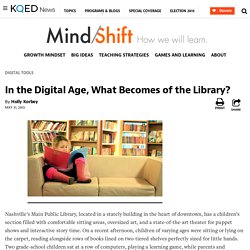
On a recent afternoon, children of varying ages were sitting or lying on the carpet, reading alongside rows of books lined on two-tiered shelves perfectly sized for little hands. Two grade-school children sat at a row of computers, playing a learning game, while parents and caregivers checked out books via computer. A line of parents and children waited to speak with one of the two librarians on duty. Something about the scene seemed touchingly retrograde: minus the computers and modern furniture, this could have easily been a library scene from 1980 or 2013.
That timeless feeling, said library director Kent Oliver, is because reading, regardless of format, continues to be important.
Trends in Academic Library Repurposing. Ohio University Alden Library Learning Commons. List of academic databases and search engines. Wikipedia list article This article contains a representative list of notable databases and search engines useful in an academic setting for finding and accessing articles in academic journals, institutional repositories, archives, or other collections of scientific and other articles.
Databases and search engines differ substantially in terms of coverage and retrieval qualities.[1] Users need to account for qualities and limitations of databases and search engines, especially those searching systematically for records such as in systematic reviews or meta-analyses.[2] As the distinction between a database and a search engine is unclear for these complex document retrieval systems, see: the general list of search engines for all-purpose search engines that can be used for academic purposesthe article about bibliographic databases for information about databases giving bibliographic information about finding books and journal articles.
Operating services[edit] See also[edit] References[edit]
Scirus - for scientific information. Is Real Educational Reform Possible? If So, How?
From the dawn of institutionalized schooling until now there have always been reformers, who want to modify the way schooling is done.
Photo Ops: 10 Innovative Ways to Use Visual Media. 6/1/2011 By: If you’re lucky enough to have digital cameras at your disposal, here are a few picture-perfect ways to use them.
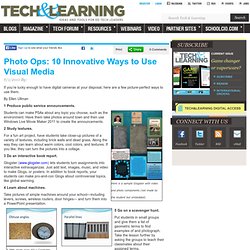
By Ellen Ullman 1 Produce public service announcements. Students can make PSAs about any topic you choose, such as the environment. Have them take photos around town and then use Windows Live Movie Maker 2011 to create the announcements. 2 Study textures.
III. Websites to Validate. More search help : Google search basics - Web Search Help. You can use symbols or words in your search to make your search results more precise.
Top News - The top 10 ed-tech stories of 2009.
Skills Overview - Big6. The Big6™ Developed by Mike Eisenberg and Bob Berkowitz, the Big6 is the most widely known and widely used approach to teaching information and technology skills in the world. Used in thousands of K-12 schools, higher education institutions, and corporate and adult training programs, the Big6 information problem-solving model is applicable whenever people need and use information.
12 technologies that will reshape school libraries. Media Literacy and Learning Commons in the Digital Age: Toward a Knowledge Model for Successful Integration into the 21st Century School Library. Www.oecd.org/education/country-studies/centreforeffectivelearningenvironmentscele/40051347.pdf. Seneca College Is Creating the Library of the Future. Designing Collaborative Spaces for Schools. Learning Environments | January 2013 Digital Edition | Feature. Learning Commons at Roger Williams University. Overview. Designing Collaborative Spaces for Schools. Jennifer LaMaster - Outlook Web App. What spaces do libraries need?
Library - Facilities. Some design considerations. Library design. Www.clir.org/pubs/reports/pub122/pub122web.pdf. Designing Libraries - Designing Libraries. Library design & programmes.










